Jetty-caught Striped Perch and Mussels in a Tomato and Tamarind Sauce
It’s been a while since I’ve been fishing. Mostly because work has been such a bear. I’ve been working 6-day weeks, double shifts. And I haven’t been able to get away to fish (my favorite way to unburden myself of life’s stresses).
So when the time came this week for two days off in a row, I decided that I would let the rainstorms, rocks and surf work on my tensions, and I headed out after dinner to camp at South Beach State Park, just south of Newport, on the Oregon Coast. Newport is one of Oregon’s many shiny seaside pearls, crowned with a majestic art-deco bridge that spans the ship channel over Yaquina Bay.
Along either side of the channel, two rock jetties extend into the ocean to protect the channel from the tempestuous Pacific Ocean.
Those jetties, particularly the south jetty, are favorite spots for fisherman on the hunt for rockfish, a species that lives among the rocky crevices along the jetties and among the rocky outcroppings that jut from the ocean floor and stud our coastline like marooned giants.
It was windy on the drive from Salem to the coast, and when I reached the Van Duzer Forest corridor that cuts through the Coastal Range, the mist had turn into a torrential downpour and my wiper blades were struggling to keep up. Every now and then, I could see the branches of the giant Douglas firs flailing in the wind from the reflection of my headlights. I was struggling to remember whether or not I had packed my waterproof pants.
By the time I got to the coast, the sky was clear and the nearly full moon cast a glow upon the ocean waves. I stopped at the lookout at Cape Foulweather, one of the highest points along the Oregon coast, and got out for some fresh air. I braced myself against the stiff wind and looked out over the ocean, casting its giant waves upon the rocks below and sending its dissipating might up into the air in giant sheets of spray. In the distance, I could see the glittering lights of Depoe Bay and farther yet, the Yaquina Head Lighthouse flashed its warning beacon in the night.
I got back into my SUV and headed onto Highway 101 south and within a few minutes was driving through Depoe Bay, home of a tiny harbor and a fishing charter outfit that Charles and I have taken on salmon expeditions. The boats were securely moored in the harbor. When I looked out at the channel, the small jetties were completely overcome by the crashing waves.
The town had shut down by the time I got to Newport, with only the businesses that catered to the barest necessities open — a few gas stations, convenience stores. As the highway climbed to meet the high art-deco bridge spanning the ship channel to Yaquina Bay, I noticed a large sign next to the roadway: High Winds — no bikes or pedestrians on bridge when lights flashing. I rolled down the window and could feel the stiff wind and wondered how much worse it would have to be before the lights would start to flash. The bridge was lit and each steel rib in its art-deco arch seemed to glow in the night. I shuddered a little and tried to keep my eyes glued to the roadway ahead of me. Before long, I had crossed the bridge and was turning off the highway to South Beach State Park.
The park station was closed but I dutifully took a pay envelope, drove around to find a campsite I liked and noted its number on the envelope, then drove back to the station and stuffed $22 inside the envelope, sealed it and dropped it into the lock box before driving back to my chosen campsite. It didn’t take me long to get the air mattress inflated and situated in the rear of my Honda Element, and I piled two layers of sleeping bags on top of me and dozed off. It was only 40 degrees outside. I woke up only once during the night, to the sound of rain pelting my car, and remembered that I had my rear sunroof ajar and got up to close it before water got in. I could hear the rain, the wind and, in the distance, the angry sea still venting its fury on the beach and rocks, and was lulled to sleep.
I woke up around 7 a.m., hastily texted Charles to let him know that I had made it safe and sound and was packing up to head for Newport’s south jetty to fish. By the time I got to the jetty, it was daylight but I was the only one there, except for a flock of seagulls resting on the asphalt road to the jetty. They weren’t too happy to take flight again as my car neared, and they shrieked as if to protest. As the paved roadway ended and sand began along the jetty, I shifted into low gear and slowly drove along, scouting for a spot far out enough but still safe from the ocean waves at the tip of the jetty. I spied a break in the sand dunes and got out of my car to take a look. The massive boulders were arranged in such a way that I could easily and safely climb down part of the jetty close enough to the surface of the ocean, but high enough to stay out of reach of the waves. I parked in a level spot and proceeded to get out my rod and tackle box, and removed from the cooler containers filled with live sand shrimp . Rockfish love sand shrimp. They’re hard to keep on the hook because their bodies are so soft so they’re good for only two to three casts at the most.
I scampered down the rocks to a flat boulder and sat down to get my gear in order, set up my rigging, bait my hook and make my first cast, which landed about 20 yards away. I slowly pulled back until my line was taut and waited. I eyed the tip of my rod, which arched with tension and straitened out again with each surging wave, watchful for a tug that broke the rhythm of the waves, a sign that a fish was on the line. It wasn’t long before the first tug, but I wasn’t quick enough and by the time I reeled it in, the fish had the last laugh and was munching away on the stolen bait, free of the hook. I cursed in silence, put another sand shrimp on the hook and cast in about the same location as before, hoping to catch the thief that had made off with my first bait. Before long, another tug. This time, there was continual tension on the line as I reeled it in. There’s that moment of excitement when you’re reeling in your line and conscious of the weight of whatever creature is at the other end, wondering what it is and how big it is, waiting for the instant when the creature breaks the surface of the water and reveals itself. For me it’s like Christmastime, when you’re shaking that wrapped gift, studying the size of the box, gauging its weight and wondering if it’s that secretly wished-for item.
Ta-da, the fish breaks the surface of the water — a kelp greenling. They’re beautiful torpedo-shaped fish and their flesh is sweet and delicate, but they’re full of small bones — best for oven-roasting. Alas, this one was too small to keep. So I carefully dislodged the hook, which had pierced its lip, and tossed it back into the sea. I told it in Thai that I was freeing it so that it could grow up and find my hook again next year when it was bigger.
By 2 p.m., when it was getting close to time to head back home, I had reeled in 5 fish, all kelp greenlings, and had set them all free because they were too small. I was down to my last two sand shrimp and had lost three sets of weights and riggings, victims of snags on the undersea rocks. I placed my next-to-last sand shrimp on the hook and made a horrible cast, which landed with a flop about 10 yards away, but decided to just let it stay there instead of reeling it in and recasting. As soon as I let go of the thought, my line tugged vigorously and I snapped my rod toward the sky and began quickly reeling in the line. Whatever it was on the other end was struggling to get away, yanking as I kept reeling. I was reeling so fast that the fish flew out of the water and onto the rocks beneath me and flopped as I reeled slower to bring the fish to my level. It was almost the most beautiful thing I’ve ever pulled from the ocean. It was a striped perch. Its cheeks were fluorescent yellow and it had ruby and yellow stripes running down its dish-shaped body. The only thing I’ve pulled out of the ocean more beautiful was during our first salmon fishing trip out of Depoe Bay when I reeled in a Coho, only to realize that it was wild and we needed to release it. (In Oregon you can keep only hatchery-raised salmon, distinguishable from its wild cousins by a clipped fin.)
With my prize safely off the hook and in my fish bag, I tossed the last sand shrimp I had into the ocean and packed up my gear. I looked back up the rocks toward the jetty and realized that it was going to be a lot harder getting up those rocks than coming down…so I took my time putting my gear higher on one rock and then climbing up afterward and repeating. By the time I got to the top of the jetty I was out of breath and my knees were wobbly, not from the stress of climbing, but from the stress of standing upright for the first time after spending seven hours sitting on a cold wet rock.
I slowly made my way to the car, took another look at the fish, still wiggling in the bag, before I dumped it into the ice chest, stowed my gear and started on the road home. I couldn’t wait until I was within cell phone reception to let Charles and Mom know of my catch. Charles was excited to see what I would bring home. I could sense that Mom was a little disappointed that I had gone through all that trouble of driving out to the oceanside, camping overnight, and fishing all day long to bring home one fish. It was no consolation to her that I caught six but let five of them go becuase they were too small. At least I managed a chuckle out of her when I told her that I told the fish in Thai that I was letting them go so that they would grow up and find my hook again next year.
Striped Perch and Mussels in a Tomato and Tamarind Sauce
Serves 3-4
Ingredients
- 3 tablespoons (45 ml.) peanut oil or cooking oil for sauce and 4-6 cups (.96 l.-1.4 l.) for pan-frying the fish, depending on size of fish
- 3 cloves garlic, finely chopped
- 5 red Thai chilis
- 1 yellow bell pepper and 1 red bell pepper, cut into small cubes
- 6 ounce (240 ml.) can of tomato paste
- 1 teaspoon (5 ml.) tamarind paste
- 2 cups (480 ml.) water
- ¼ cup (60 ml.) sugar
- 4 teaspoons (20 ml.) vinegar
- 1½-2 lb.(600-900 g.) firm-fleshed fish like striped perch, red-tailed surf perch, red snapper or sea bass, gutted and scaled
- 1-1½ lb. (400-600 g.) mussels, cleaned and de-bearded
- Chopped cilantro and chopped scallions for garnish
Method
- Heat 3 tablespoons (45 ml.) of oil over high heat in a large pan that you can cover with a lid.
- Add chopped garlic and chilis whole and sauté until garlic is golden.
- Add bell peppers and stir a few minutes.
- Add tomato paste, tamarind paste, water, sugar and vinegar and stir to mix well. Bring the mixture to a boil and then turn off heat.
- In another large pan, heat the remainder of the oil over high heat and deep fry the fish, turning it over until both sides are golden brown.
- Remove the fish from the pan, letting it drain off excess oil and then place it in a large serving dish.
- Bring the sauce mixture back to a boil over high heat and add mussels, stirring to make sure the mussels are covered with the sauce, and then cover the lid and cook until all mussels are open, stirring occasionally. Discard any mussels that refuse to open. Turn off heat and arrange mussels around the fish and then pour sauce over fish and mussels.
- Garnish with chopped cilantro and spring onions and serve.
Enjoy!
— Vic
About the Author (Author Profile)
Victor Panichkul is a journalist and writer by training; a cook, wine lover and photographer by passion; and a lover of the outdoors since moving to Oregon more than 10 years ago. He is a native of Bangkok, Thailand.






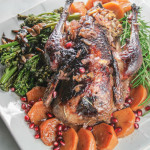

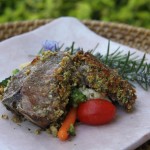




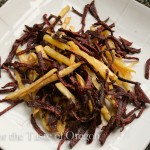


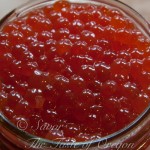


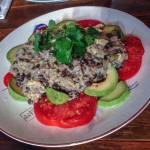

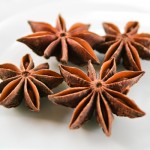



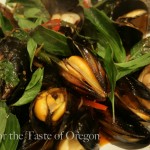



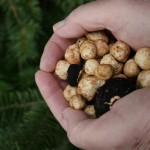
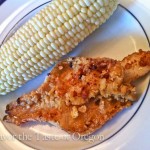



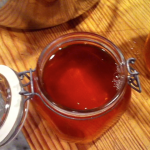
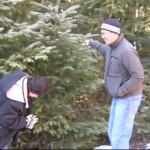
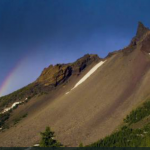



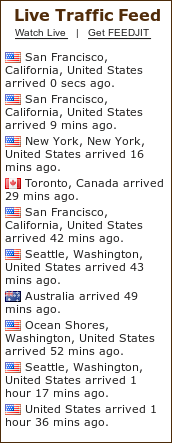





Hello I am so thrilled I found your blog, I really found you by mistake, while I was browsing on Askjeeve for something else, Regardless I am here now and would just like to say many thanks for a marvelous post and a all round exciting blog (I also love the theme/design), I don’t have time to read it all at the minute but I have book-marked it and also added your RSS feeds, so when I have time I will be back to read a lot more, Please do keep up the superb b.|